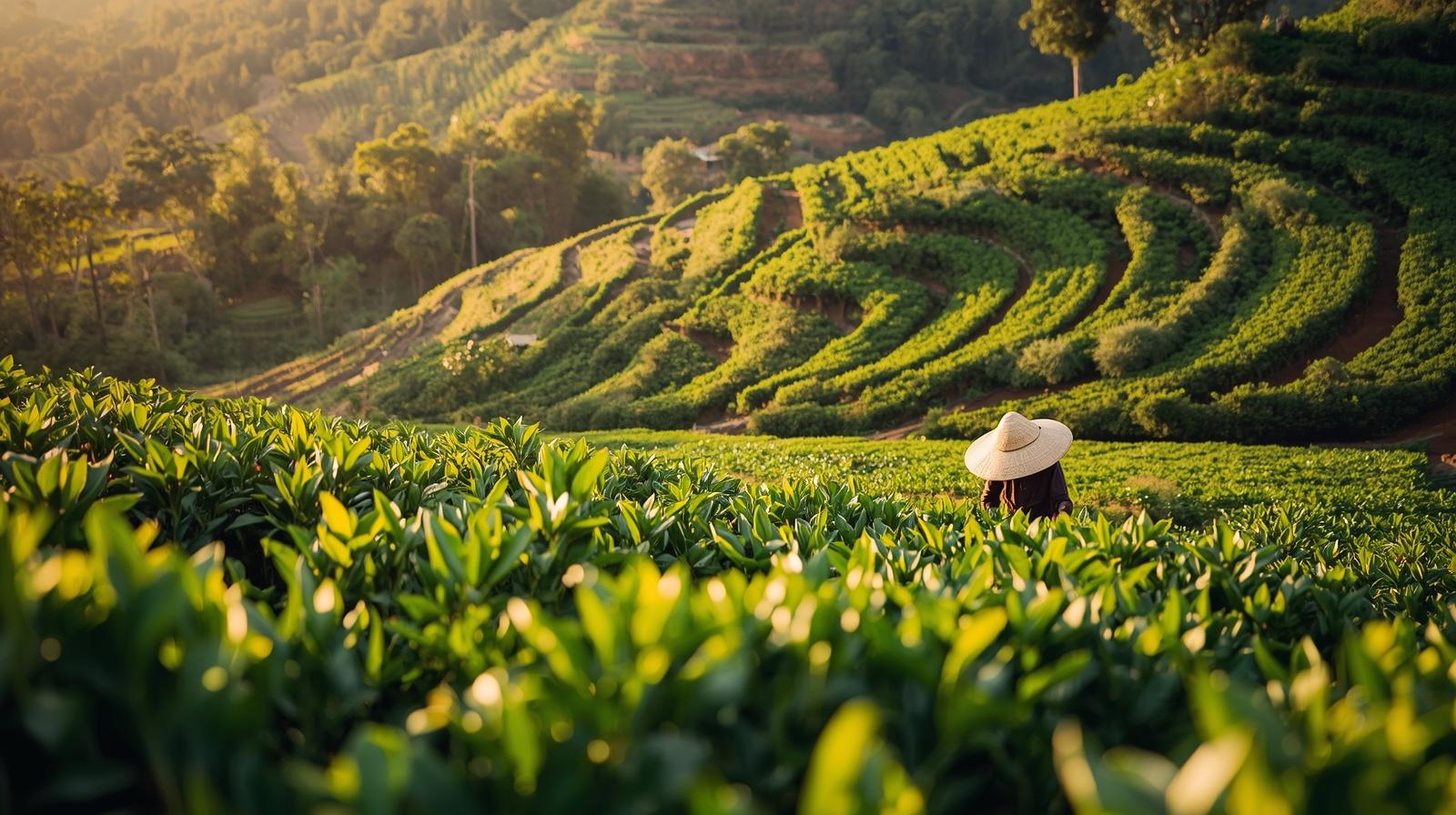Protecting the Planet One Cup at a Time
Welcome. This guide offers clear steps for sustainable coffee farming from seed to cup.
You’ll get practical tips for growing coffee in an eco-friendly way.
Learn how to manage organic coffee and use regenerative models that care for soil and water while boosting yields.
We use real examples from the industry to show what works.
Kabioca shows off certified organic coffee and eco-friendly pods with carbon-neutral shipping.
Nature Brew Escape uses direct trade and supports community programs with price commitments.
Compass and Real Good Coffee team up with Loring low-emission roasters and long-term farm partners like Finca La Democracia to enhance quality and cut emissions.
The goal is simple: make knowledge easy for everyone to use.
Each section helps growers, roasters, SMEs, buyers, and consumers in the U.S. and worldwide.
You’ll learn how to improve soil and water health, support farm livelihoods, reduce waste and emissions, and enjoy better coffee quality. Plus, you’ll get ways to measure sustainability in coffee.
Key Takeaways
- Learn practical steps for sustainable coffee farming practices you can adopt or support.
- See real-world examples from Kabioca, Nature Brew Escape, and Compass/Real Good Coffee.
- Understand how organic coffee and regenerative coffee protect soil, water, and biodiversity.
- Find actions that lower waste and emissions across the supply chain.
- Gain measurable metrics to track farm and supply-chain sustainability progress.
sustainable coffee farming practices
Good coffee begins with farm choices. Sustainable farming means protecting nature, supporting fair work, and lasting production.
Nature Brew Escape sees sustainability as a core value, not just a term.
What sustainable coffee farming practices mean
These practices mix ecology, people, and profit. Farmers use fewer chemicals, save water, and improve soil.
They also plant shade trees and protect pollinators to keep coffee flavors and quality.

Environmental protection aims to use less water and capture more carbon through agroforestry.
Social equity seeks fair incomes and safe work for farmers. Economic resilience helps farms stay strong through market changes while keeping coffee quality high.
Nature Brew Escape sees real changes with sustainability. Kabioca cuts aluminum with biodegradable pods.
Compass saves energy with Loring roasters. These show how goals become real actions.
Key metrics to track on-farm sustainability
Tracking shows real progress. Watch soil health, water use, and shade cover. Also, count birds and pollinators to measure biodiversity.
Look at yield and price-to-cost ratio to ensure fair income. Record organic output and carbon footprint.
Nature Brew Escape saved 38% water and offset 12,000 tons of carbon.
These metrics guide you toward greener coffee production.
They help grow sustainable coffee farming worldwide.
Why sustainable coffee farming matters for climate and communities
Sustainable coffee farming connects climate health to our daily lives. Rising temperatures and unpredictable rains change where Arabica can grow.
This shift brings pests and diseases into new areas, threatening specialty varieties and the farms that rely on them.
Climate threats to coffee-growing regions and crop resilience
Warming causes temperature bands to move uphill and poleward. Rain patterns become less predictable.
This makes flowering and cherry development unreliable.
Without adaptation, prized varieties may become scarce or very expensive within decades.
Climate-resilient coffee practices offer farmers ways to adapt.
Shade trees, soil cover, and diverse plantings help buffer heat and hold moisture.
These methods lower crop losses and keep quality consistent.
Human impacts: livelihoods, education, and community stability
When harvests fail and prices drop, families lose income.
Middlemen often take most of the profit, pushing smallholders to grow other crops or migrate. Fair trade coffee farming can change this.
Nature Brew Escape is a good example. They pay 45–60% above commodity prices, offer guaranteed purchases and floor prices, and provide pre-harvest loans.
These actions stabilized incomes, raised school attendance, and funded local projects.
Paying living wages and supporting community services keeps knowledge passed down through generations.
This is crucial for long-term supply and for preserving heirloom beans prized by roasters and drinkers.
How preserving biodiversity protects flavor and long-term supply
Shade-grown, bird-friendly farms protect the canopy and soil microclimates that build complex flavor precursors. Farms like Finca La Democracia work with partners to maintain forested buffers and bird habitat.
This stewardship preserves the subtle notes found in Ethiopian Yirgacheffe and distinct Guatemalan profiles.
Regenerative farming for coffee focuses on soil health, mixed plantings, and habitat corridors. These practices support beneficial insects and microbes that keep pests down and enhance crop characteristics.
Protecting ecosystems and supporting communities helps secure a steady supply of specialty beans for future generations.
Organic coffee growing methods that protect soil and water
Organic coffee farming is based on simple rules. Farms stop using synthetic fertilizers and pesticides.
Instead, they use compost, green manures, and diverse plants to build living soil.
This approach leads to healthier trees, cleaner water, and better-tasting coffee.
Principles of organic cultivation
First, avoid chemical inputs. Use composting to return nutrients from coffee pulp and byproducts to fields.
Adopt integrated pest management that favors natural predators.
Keep clear records so brands like Kabioca can verify organic certification and traceability.
Practical on-farm steps
Set up low-cost compost systems near processing areas to recycle pulp. Rotate cover crops and plant legumes to fix nitrogen and break pest cycles.
On slopes, use vetiver grass strips and contour planting to slow runoff and trap soil.
Water conservation and watershed care
Install water-efficient pulping and washing systems to cut consumption. Use closed-loop processing where possible to reuse water and reduce pollution.
Mulch and shade trees reduce evaporation and keep soil moist. Protect upstream forests to maintain steady flows for farms and downstream communities.
These soil health techniques and eco-friendly coffee cultivation practices lower costs and build resilience.
Small changes such as composting and contour planting yield measurable gains in soil structure, water retention, and long-term productivity.
Regenerative farming for coffee: restoring ecosystems

Regenerative farming for coffee aims to rebuild soil and boost biodiversity. It also restores ecosystem services while keeping farms productive.
This approach uses a mix of trees, cover crops, and diverse plantings.
Agroforestry and shade-grown systems
Agroforestry mixes timber and fruit trees with coffee plants, creating layered canopies.
Shade-grown coffee provides a home for birds and insects. It also reduces heat stress on coffee trees.
Choosing the right species, like Inga and native fruit trees, adds nitrogen to the soil. It also increases carbon storage in woody biomass.
Soil carbon capture, rotational plantings, and reduced tillage
Soil carbon capture builds organic matter over time. This happens when roots, leaf litter, and minimal soil disturbance occur.
Reduced or no-till methods protect soil structure and cut carbon loss.
Rotational intercropping with beans, grasses, or vegetables breaks pest cycles. It also improves soil porosity.
Living ground cover and composting help recover degraded soils. These practices increase water retention and reduce erosion.
They also support carbon sequestration in coffee systems.
Case example: shade-grown, bird-friendly farms and flavor outcomes
Compass and Real Good Coffee have worked with Finca La Democracia. They use 100% shade-grown, bird-friendly methods.
This partnership shows higher biodiversity and distinct cup profiles in tasting panels.
Nature Brew Escape reports agroforestry projects that contribute to climate goals.
They have sequestered 12,000 tons of carbon in coffee landscapes.
Bird-friendly farms often produce cherries that ripen more slowly. This slow ripening can deepen sweetness and complexity in the cup.
Choosing beans from regenerative farms supports systems that store more carbon, nurture wildlife, and deliver a richer flavor experience.

Ethical coffee farming techniques and fair trade impacts
Supporting coffee that pays workers and protects nature is easy. Choose proven models and partnerships.
This section compares common approaches and shows how buyers and companies can help.
Direct trade connects roasters and farmers with clear prices based on quality. Brands like Counter Culture and Stumptown started this trend.
Nature Brew Escape goes further with a Price Commitment Guarantee, ensuring fair prices and quality.
Fair trade coffee farming sets standards and minimum prices to help growers. It lets cooperatives reach markets they couldn’t reach alone.
Combining direct trade and fair trade can help more.
Cooperatives give smallholders more power. Places like Coopedota in Costa Rica and ACPCU in Uganda work together.
They export more, manage facilities, and invest in their communities.
Living wage coffee goes beyond market prices. Companies use local studies to figure out living wages.
They include housing, education, healthcare, and savings. Pre-harvest loans and fixed-price contracts help farmers plan.
Here are the steps for buyers and roasters:
- Partner with local cooperatives to scale quality and distribution.
- Adopt living wage coffee calculations and publish the methodology.
- Provide guaranteed purchases or forward financing tied to quality incentives.
- Invest in training and infrastructure that raise productivity and lower costs.
Nature Brew Escape shows how to invest in communities. They funded schools, clean water systems, and women’s funds.
They also helped keep youth in rural areas.
Choosing ethical coffee farming, fair trade, or living wage models helps families and communities.
Small changes in contracts can make a big difference.
Eco-friendly coffee cultivation: reducing waste from farm to cup

Every stage of coffee production can be made greener. Small changes on farms and in roasteries make a big difference.
This section highlights simple steps to support eco-friendly coffee and cut waste.
Harvest and processing choices that minimize waste and pollution
Hand-picking cherries reduces waste and improves coffee taste. Dry-processing uses less water than wet mills.
It’s better for the environment.
Wet processing? Use closed-loop water systems and treat effluent. This cuts down pollution and saves water.
Composting processing byproducts and reusing coffee pulp
Parchment and pulp are full of nutrients. Composting them makes great fertilizer.
It also cuts down on chemical fertilizers.
Brands like Kabioca and Nature Brew Escape compost pulp. This recycles nutrients and saves money.
Compost piles need the right temperature and air.
This prevents bad smells and speeds up decomposition. It’s good for the soil and nutrients.
Packaging choices and reducing transport emissions
Packaging affects waste and carbon emissions. Kabioca uses biodegradable pods made from corn starch and cellulose. They compost quickly.
Compass uses aluminum pods that are 100% recyclable.
They source tins locally to reduce emissions.
Recycled paper bags and carbon-neutral shipping are good choices. Buying local materials cuts down on miles and supports local businesses.
Waste from pods can take centuries to break down.
Steps like selective picking, closed-loop mills, composting, and eco-friendly packaging help.
These actions support eco-friendly coffee and reduce waste from start to finish.
Green coffee cultivation strategies for small and medium enterprises
You don’t need a big budget to build a strong brand. Start by making sustainability a key part of your business.
This includes product design, how you buy things, packaging, and daily operations. Small steps can lead to big gains in quality, cost, and customer trust.
Focus on a bean-to-cup approach for a traceable coffee supply chain. Track each lot from farm to roaster.
Share the story behind every bag by labeling origins, harvest dates, and processing methods.
How SMEs can build sustainable brands and traceability systems
Map your suppliers and set clear rules for sourcing. Use simple batch codes and digital records to link beans to farms.
Share transparent information on social and environmental practices. This boosts credibility and supports premium pricing for SMEs sustainable coffee.
Choose packaging that matches your claims. Opt for durable, compostable, or recyclable materials.
Design packaging with QR codes that connect shoppers with farm-level data.
Success story: Kabioca’s organic pods, biodegradable packaging, and carbon-neutral shipping
Kabioca started in 2020 with organic coffee in biodegradable, aluminum-free pods.
The company sold pods in seven countries and cut aluminum use by about 0.5 ton.
Kabioca uses recycled paper, ecological adhesives, and paperless invoicing.
It partners with carbon-neutral shippers to reduce emissions. This supports the brand’s claims.
Enterprise Europe Network helped Kabioca expand. EEN created a company profile and connected Kabioca with partners in Slovakia and Japan. It also arranged virtual B2B meetings.
Trade shows like EUfood2Japan and Free From Functional & Health Ingredients Expo gave the brand exposure and contacts.
Tools SMEs can use: certification, databases, and international networks
- Certifications: organic and fair-trade seals that validate claims and open markets.
- Traceability databases: simple platforms to record lot-level data and share it with buyers.
- Carbon-accounting tools: measure transport and processing emissions to set reduction targets.
- Networks: Enterprise Europe Network and the EU-Japan Centre help find partners and gain market access.
Use these tools to create a clear roadmap. Start with supplier mapping, then add certifications and a traceable coffee supply chain system. Partner to scale distribution and improve margins.
This way, SMEs sustainable coffee can grow while protecting farms and forests.

Practical steps for farmers: training, technology, and financial support
Smallholder coffee farms do well when they have good training, solid finance, and the right tech.
Workshops teach farmers how to farm smarter, lenders offer loans that fit the farm’s needs, and digital tools help connect with buyers and experts.
Farmer training programs for climate-resilient techniques
Hands-on training workshops for farmers are key. They learn about shade management, pest control, and how to process coffee better.
This reduces losses and improves the taste of the coffee.
For example, Nature Brew Escape’s workshops helped farmers increase their coffee quality by an average of 4.6 points.
Access to financing, pre-harvest loans, and guaranteed purchase agreements
Financing for farmers needs to match the farm’s cycle. Pre-harvest loans and agreements to buy coffee at a set price help farmers invest without worrying about price drops.
Nature Brew Escape pays 45–60% more than market price and offers agreements with inflation adjustments. This helps farmers invest in their communities and schools.
Digital tools and farmer-to-farmer mentorship models
Digital tools bring many benefits to small farmers. They can track their harvests, get advice from labs, and manage payments. Mentorship between farmers spreads knowledge quickly.
Programs like EEN connect farmers with buyers and partners worldwide.
When training, finance, and tech work together, farmers see big improvements. Quality goes up, incomes grow, and families can invest in education and local projects.
| Support Type | Main Benefit | Typical Offer | Measured Impact |
|---|---|---|---|
| Training | Higher quality, lower losses | Workshops on shade, pests, and processing | Quality score +4.6 points (Nature Brew Escape) |
| Finance | Stable cash flow, investment capacity | Pre-harvest loans, price floors, premiums | Income increases; funds for schools and projects |
| Technology | Traceability, faster advice | Mobile traceability, remote agronomy, and lab feedback | Better processing, faster market access |
| Mentorship | Faster adoption of best practices | Peer farmer networks, demonstration plots | Improved on-farm methods and yields |
sustainable agriculture practices for coffee at scale
To scale up sustainable coffee farming, connect farms, buyers, and public programs.
Start with shared nurseries for shade trees. Also, have cooperative extension teams and training hubs for agroforestry and regenerative methods.
First, focus on regional coordination. Use cooperative extension models and regional shade-tree nurseries. Public-private partnerships fund these efforts.
Nonprofits and companies like Nature Brew Escape help seed and mentor programs.
To grow agroecological practices, conduct field trials and farmer-to-farmer learning. Short plots show the benefits of shade trees. Training that links technical skills to market access speeds up adoption.
Supply chain sustainability relies on trust and shared goals. Roasters, distributors, and retailers must work together.
They should support farmer training, guaranteed buying, and processing infrastructure.
Long-term contracts and joint investments reduce risks for farmers and buyers.
Brands like Compass have shown this. Contracts with price floors and cost-sharing for inputs make regenerative systems feasible.
Measuring impact is key. Use certifications like Organic and Fair Trade. Also, conduct local biodiversity surveys and soil tests.

Carbon accounting coffee needs clear tools. Use verified calculators to estimate emissions. Track soil organic carbon, fuel, fertilizer, and transport emissions.
Social indicators are as important as ecological ones. Monitor school enrollment, healthcare, and income.
Keep data simple for cooperatives and roasters to report progress.
Make sure to act on the data. Have regular field checks, annual audits, and public dashboards.
This builds trust. Shared data platforms help roasters and retailers show supply chain sustainability and give farmers feedback.
How roasters, cafes, and consumers support environmentally conscious coffee production
Roasters, cafes, and consumers all play a part in making coffee production better for the planet.
Small actions can make a big difference. Businesses can choose cleaner equipment and smarter buildings. They can also use packaging that reduces waste.
Low-emission roasting starts with the right machines. Modern roasters like Loring models use less fuel, cutting emissions by 80%.
Many roasters also capture and compost waste, helping farms and reducing pollution.
Energy-efficient buildings help too. Places like Compass use LED lights and smart thermostats to save energy.
This not only cuts costs but also helps keep the air clean in coffee-growing areas.
Sustainable packaging for coffee is another key area.
Brands can use recyclable or compostable pods. For example, Compass uses American steel tins, reducing emissions and supporting local businesses. Kabioca offers biodegradable pods, reducing plastic and aluminum waste.
Choosing local packaging materials is important. It cuts down on shipping and supports local businesses.
Programs like Compass’s refill incentive encourage people to reuse tins, reducing waste.
Consumers have a big impact too. By buying from companies that pay fair wages, you send a message.
Supporting refill programs rewards reuse. Visiting farms or taking virtual tours helps you understand where your coffee comes from.
- Choose coffees from roasters that report on fuel use and emissions.
- Opt for recyclable or compostable options when you can.
- Return tins or pods when brands offer refill incentives.
- Support roasters that invest in low-emission roasting and energy-efficient upgrades.
Real examples show how we can make a difference. Compass’s local sourcing and refill programs encourage reuse.
Kabioca’s biodegradable pods reduce waste.
Nature Brew Escape uses consumer support to help schools and communities in coffee-growing areas.
Your choices have an impact. Every time you buy sustainably produced coffee, you help create demand for better practices.
This supports cleaner roasting, better packaging, and fairer supply chains.
Get this great design from our Teepublic Store
Conclusion
Working together, we can make coffee farming better. Farmers focus on soil health, water use, and organic farming.
This boosts their crops and makes them more resilient.
Small and medium businesses need to create clear supply chains. They should invest in composting and better packaging.
Using certifications helps prove their positive impact.
Roasters and retailers have a big role too. They should use green roasting methods and energy-saving facilities.
Also, they should use packaging that can be recycled or composted.
When you buy coffee, choose brands that treat workers fairly and show their efforts. This helps reduce waste and supports local economies.
Let’s measure our progress: track soil health, water use, and carbon emissions. Join networks and use tools to improve.
A sustainable coffee future needs good practices, investment in people, and honest choices.
Every cup of coffee can help the planet and support communities.
Make smart choices, support brands with real impact, and keep pushing for better coffee production.
Let’s do this, one cup at a time.






